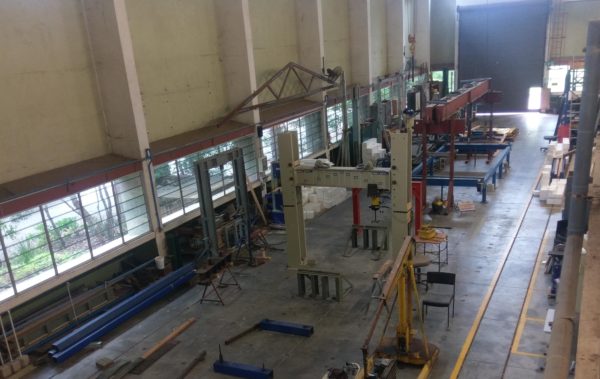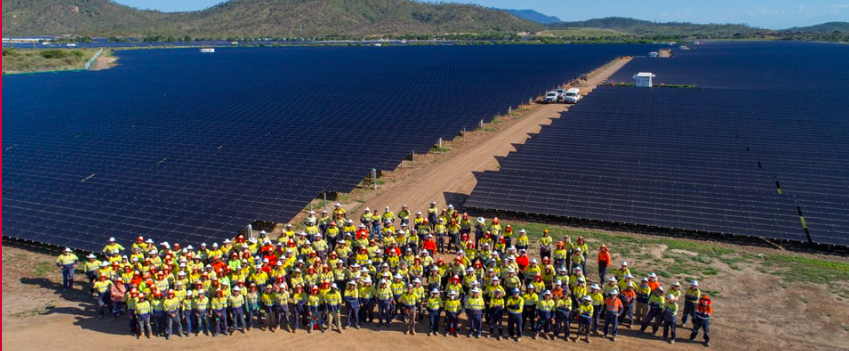You’ve seen the heat maps of Australia’s solar resource: Queensland is ablaze with opportunity — the solar component of the Kidston Energy Hub for example, will generate 49% more power than the international average. The state’s wind resource is also a cracker at times — and at other times too cracking. During the average 4.7 cyclones that hit Queensland each year all infrastructure, including solar plants, is at risk and must be constructed for resilience.
In 2018 Sun Metals Corporation was installing Australia’s biggest behind-the-meter solar-generation plant (125 MW), to dramatically reduce electricity costs at the zinc refinery it operates near Townsville. It wanted to bring this new asset under its insurance-policy umbrella and asked insurer FM Global to assist in minimising the risks posed by cyclones.
Terence Lee, Senior Account Manager with FM Global, told pv magazine that his company could not easily validate the claims of the designer and installers that the solar farm had been designed with extreme wind conditions in mind.
“We were trying to correlate the design with Australian Standards, and… we found that the National Construction Code doesn’t actually reference the type of solar farm that Sun Metals was building,” Lee says.
Because it could not access clear guidance, FM Global proposed testing this specific solar-farm design, and worked with James Cook University’s Cyclone Testing Station (CTS) to develop an appropriately gruelling program.
Engineers at the CTS applied methodology they’d used for testing roof-mounted panels — wind-tunnel and structural static tests — but adjusted the pressures to simulate what Sun Metals’ ground-mounted infrastructure, at its particular elevation, orientation and configuration, would be subjected to.

Image: James Cook University
Simon Ingham, Senior Engineer at the CTS says, “Quite a number of failure mechanisms could occur. Whether or not there is buckling of framework, glass could shatter and whole panels or parts thereof could become flying debris.”
The other risk is that panels may not be destroyed or obviously damaged by a cyclonic event, but that their efficiency could be reduced by exposure to turbulent winds, and their output diminished.
As Australia’s energy system transitions towards clean power sources — Queensland’s goal is to achieve 50% renewable penetration of its energy system by 2030 — ensuring the generation expected from each asset becomes increasingly important.
Sun Metals’ solar farm design passed its test, and Lee credits the company and its wind farm designers with having opted for fixed-tilt technology over potentially more vulnerable tracking technology. And, he adds, “They made a decision to tilt the solar panels at a lower angle, which actually sacrifices efficiency,” but this orientation is “less likely to catch the wind”.
Anna Freeman, Director of Energy Generation at the Clean Energy Council — the peak body for the clean energy industry in Australia — is not surprised that the $200 million Sun Metals Solar Farm stood the test. She says, “Cyclones are a known risk when building anything in North Queensland, and one of many factors considered when building solar projects which are typically worth hundreds of millions of dollars.”
Freeman disputes the need for increased regulation of solar-farm design in northern Queensland saying that AS 1170 covers the requirements and that solar farms must also, “go through a technical due-diligence process in order to qualify for finance, which typically includes insurance, review by third parties and warranty obligations from product suppliers.”
Both Lee and Ingham argue that testing of each solar farm design in cyclonic conditions will provide confidence that these assets have been built for north-eastern conditions. They say that the cost of testing — typically between “$20,000 and $30,000 for a decent assessment”, says Ingham — is small compared to the overall cost of of the farm, and to the high stakes of ensuring future energy supply.
Ingham would like to see funding for the CTS to develop standardised testing of wind-farm infrastructure; and to thoroughly test solar tracking systems for vulnerability. A Clean Energy Council spokesperson pointed out that the latest tracking systems respond to weather forecasts by locking into a position best orientated to minimise the impacts of turbulence.
Lee says the safety and reliability of each unique solar farm within its topography would be validated by individual testing, and that an Australian Standard with “clear guidance on how you should design solar farms to withstand cyclonic forces”, is vital to inspiring trust in the infrastructure, and to insuring it.
Sun Metals officially opened its cyclone-resilient solar farm in August 2018 with the expectation of meeting one-third of its energy needs onsite. “We reached out to FM Global to ensure our farm was as safe as possible and we are pleased that our solar panels performed strongly,” said Kathy Danaher, CFO and Director of Sun Metals Corporation, in support of FM Global’s call today for testing and tighter regulation of solar-farm design.
This content is protected by copyright and may not be reused. If you want to cooperate with us and would like to reuse some of our content, please contact: editors@pv-magazine.com.









By submitting this form you agree to pv magazine using your data for the purposes of publishing your comment.
Your personal data will only be disclosed or otherwise transmitted to third parties for the purposes of spam filtering or if this is necessary for technical maintenance of the website. Any other transfer to third parties will not take place unless this is justified on the basis of applicable data protection regulations or if pv magazine is legally obliged to do so.
You may revoke this consent at any time with effect for the future, in which case your personal data will be deleted immediately. Otherwise, your data will be deleted if pv magazine has processed your request or the purpose of data storage is fulfilled.
Further information on data privacy can be found in our Data Protection Policy.